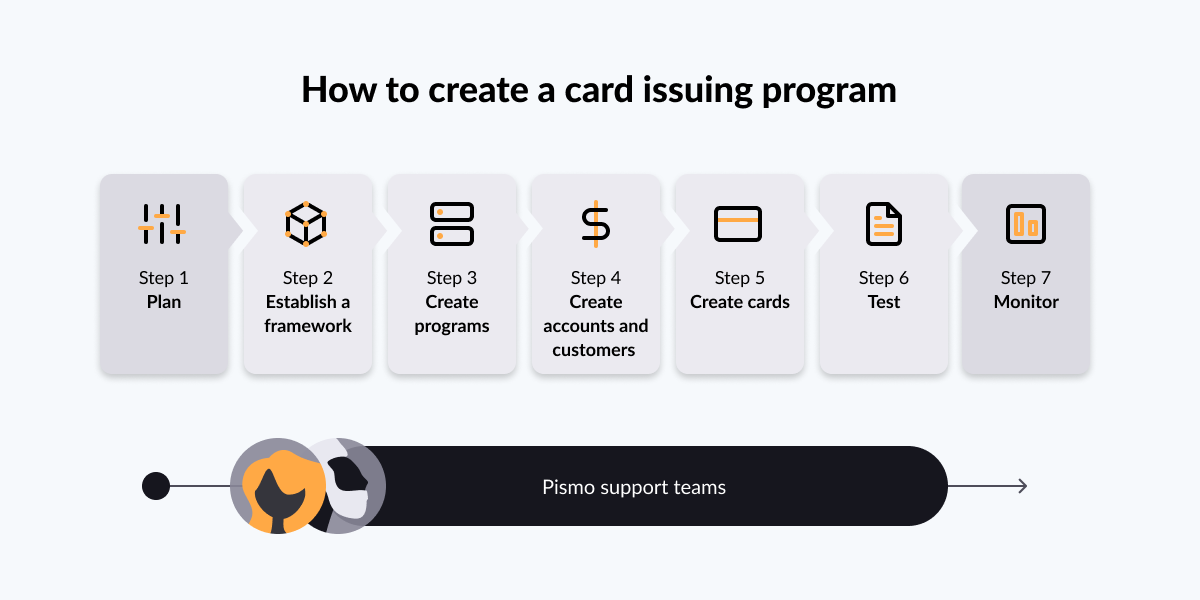Get started with card issuing
Issue and manage a variety of cards—such as debit, credit, prepaid, white-label, and private label cards—using the Pismo platform. You can launch new card products or migrate your current ones. Use this step-by-step guide to get started.
Card networks Pismo supports
We offer integrations with these card networks:
- Visa
- Mastercard
- ELO (for Brazilian-based clients only, but has international reach through association with Discover)
- RuPay (India)
- TecBan
Becoming a card issuer
The Pismo support team works closely with you to create your card issuing program. We use a comprehensive implementation plan and involve the appropriate teams.
If you’re already using other Pismo solutions, you can skip some steps. We’ll highlight these steps for you.

Identify the integration decisions to consider.
Build the foundational processes and permissions for your program.
Design your card issuing program.
Add accounts and customers to use your card issuing program.
Create your customized cards.
Ensure your program works correctly before launching it.
Continuously monitor your program’s performance and provide ongoing customer support.
Updated 3 months ago
For a review of important concepts and terms related to card issuing, refer to: